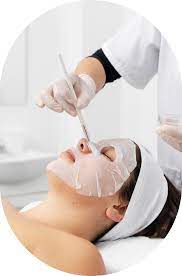Introduction
In a world where beauty standards evolve constantly, skincare products have become an indispensable part of our daily routines. From cleansers to serums, moisturizers to masks, the market is inundated with an array of products promising flawless skin. But amidst this abundance, what exactly sets effective skincare products apart? This article delves deep into the science behind skincare products, exploring the ingredients, formulations, and technologies that drive their efficacy.
Table of Contents
Understanding Skin Physiology
Before delving into skincare products, it’s crucial to understand the skin itself. The skin is the largest organ of the body, serving as a protective barrier against environmental aggressors, regulating body temperature, and facilitating sensory perception. Comprising multiple layers, the skin’s outermost layer, the epidermis, is particularly significant in skincare. It regulates moisture, protects against pathogens, and determines skin texture and appearance.

Designed for absolutely everyone who wants a piece of radical information about all components of the body structure of the skin.From the simple layers to specialized cells and functions. There are a lot of elements of the pores and skin care profession.
From retail and income to clinical and scientific remedies all the manner to the multi-faceted esthetics remedy rooms.Having an in-depth knowledge of the way that the pores and pores and skin capabilities is the gateway to any type of improvement or product recommendation.
Key Ingredients and Their Functions
Retinoids: Derived from Vitamin A, retinoids are renowned for their anti-aging properties. They stimulate collagen production, reduce wrinkles, and promote skin renewal. However, they can cause sensitivity, requiring gradual introduction into skincare routines.

Hyaluronic Acid: This powerhouse ingredient is a humectant, meaning it draws moisture from the environment into the skin. It plumps and hydrates the skin, reducing the appearance of fine lines and promoting a youthful complexion.
Vitamin C: As a potent antioxidant, Vitamin C protects the skin from oxidative stress caused by free radicals. It brightens the complexion, fades hyperpigmentation, and boosts collagen synthesis, making it a staple in many skincare formulations.

Niacinamide: Also known as Vitamin B3, niacinamide offers a myriad of benefits, including improving skin texture, minimizing pores, and reducing inflammation. It regulates sebum production, making it suitable for acne-prone skin. Alpha Hydroxy Acids (AHAs): AHAs, such as glycolic acid and lactic acid, exfoliate the skin’s surface, removing dead skin cells and promoting cell turnover. They enhance skin radiance, smooth texture, and fade discoloration.
Formulations and Delivery Systems
Skincare products employ various formulations and delivery systems to optimize ingredient penetration and efficacy.
Emulsions: Emulsions combine water and oil-based ingredients, allowing for easy absorption without leaving a greasy residue. They are suitable for all skin types and can deliver a wide range of active ingredients.
Serums: Serums contain high concentrations of active ingredients in lightweight formulations. Their small molecular size facilitates deeper penetration into the skin, targeting specific concerns such as hydration, brightening, or anti-aging.

Microencapsulation: This technology involves encapsulating active ingredients within microscopic spheres, protecting them from degradation and enhancing stability. Microencapsulated formulations ensure prolonged release and sustained efficacy of key ingredients.
Liposomal Delivery: Liposomes are lipid-based vesicles that encapsulate active ingredients, facilitating their transport across the skin barrier. This delivery system improves ingredient penetration and bioavailability, maximizing skincare benefits.
The Role of Clinical Testing

In an era of evidence-based skincare, clinical testing plays a pivotal role in validating product claims and ensuring safety and efficacy. Clinical trials assess various parameters, including hydration, elasticity, and wrinkle reduction, through objective measurements and participant feedback. Rigorous testing protocols, such as randomized controlled trials and double-blind studies, provide reliable data on product performance and tolerability.
Navigating the Skincare Market
With a myriad of options available, navigating the skincare market can be daunting. However, several factors can guide consumers in selecting suitable products:

Skin Type: Understanding one’s skin type—whether oily, dry, combination, or sensitive—helps in choosing products tailored to specific needs.
Ingredients: Prioritizing products with clinically proven ingredients suitable for individual concerns ensures efficacy and minimizes adverse reactions.
Product Reviews: Seeking reviews and recommendations from reputable sources or dermatologists can provide valuable insights into product performance and compatibility.
Patch Testing: Conducting patch tests before incorporating new products into the skincare routine helps identify potential allergic reactions or irritations.
Conclusion
Skincare products encompass a diverse array of formulations, ingredients, and technologies aimed at enhancing skin health and appearance. By understanding the science behind skincare, consumers can make informed choices, selecting products that align with their unique needs and concerns. From retinoids to hyaluronic acid, each ingredient plays a distinct role in promoting skin vitality and radiance. As the skincare industry continues to innovate, embracing evidence-based practices and scientific advancements remains paramount in achieving optimal skincare outcomes.

